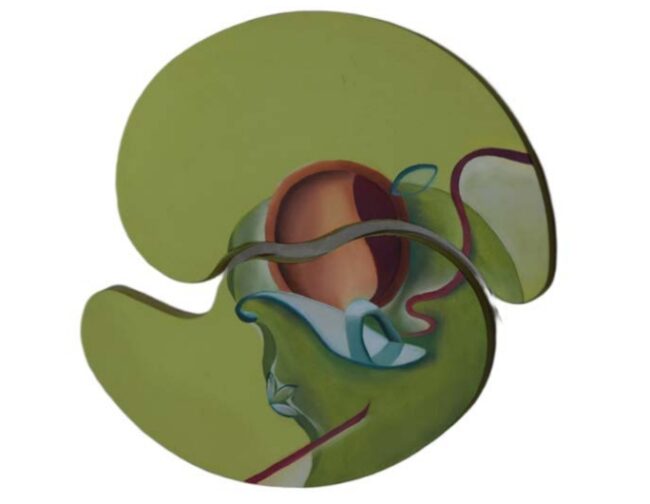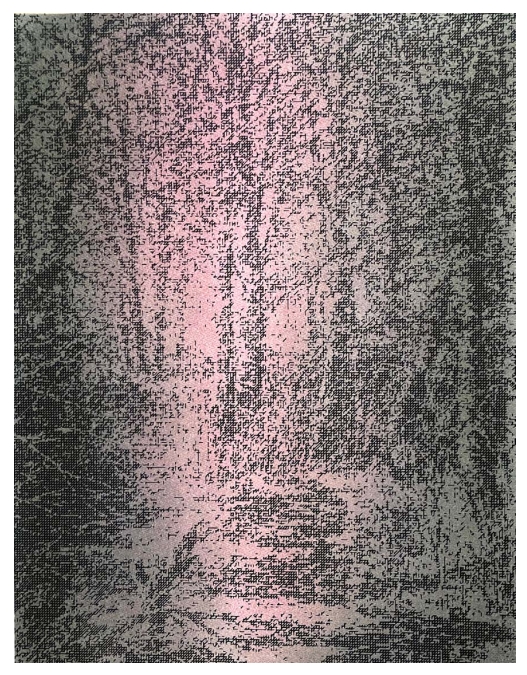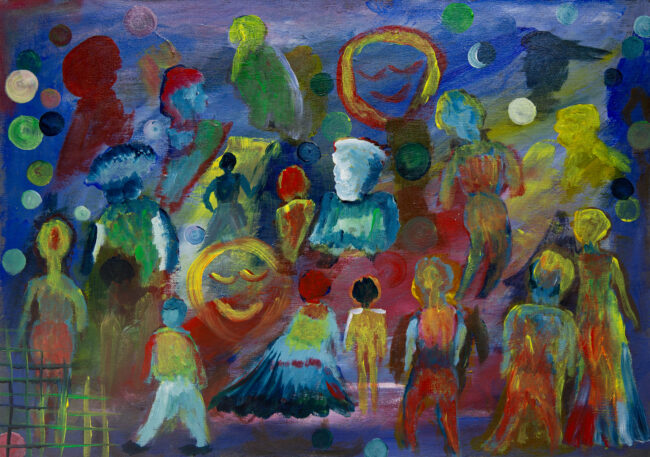Echoes of the Infinite delves into art's timeless ability to bridge sensory experiences with eternal truths. In a city brimming with realistic art
Echoes of the Infinite delves into art’s timeless ability to bridge sensory experiences with eternal truths.
In a city brimming with realistic art and intricate miniatures, the three-person exhibition titled “Echoes
of the infinite” at Numaishgah gallery in Lahore, felt like a breath of fresh air, embracing abstraction as
its defining ethos. This exhibition invited viewers to step away from the comfort of representational
narratives and immerse themselves in a realm where emotions, memories, and subconscious
connections took center stage. Abstract and philosophical, the artists explored the indefinable aspects
of human experience, transcending the visible and tangible. The unifying theme of the exhibition was a
meditation on hidden forces; those unseen but deeply felt elements that shape our inner and outer
worlds.

Salman Inam’s art explored the mind’s deceptive nature, portraying it as both a powerful and limiting
force. His works aim to free the viewer from the constraints of logic, leading them toward feelings and
experiences beyond comprehension. Through vivid, layered abstractions, Inam creates a visual journey
that defy explanation, urging viewers to feel rather than interpret. His pieces are stories without
endings—expansive and infinite, much like the human potential he seeks to highlight.

Salman Inam’s technique is a thoughtful blend of control and vitality, reflecting the essence of action
painting on a surprisingly intimate scale. He purposefully confines his work to smaller surfaces,
compressing expansive, almost transcendental ideas into these limited spaces. This creates a compelling
visual tension, drawing viewers into the intricate universe of his gestural brushstrokes and layered
textures. His color choices oscillate between two extremes: muted, earthy tones that ground the viewer
in natural harmony and vivid neon shades that radiate otherworldly energy. This interplay mirrors the
central themes of his work: the balance between rational thought and divine transcendence, capturing
the fine line between restraint and freedom. In a world increasingly dominated by logic and efficiency,
Inam’s art serves as a quiet act of defiance – a reminder of the vast, untapped beauty within each of us.
His paintings do not offer linear narratives but instead invite viewers on open-ended journeys into their
infinite potential. Experiencing his work feels akin to the liminal state of lucid dreaming, where
rationality temporarily yields to the subconscious. Rather than demanding analysis, his art invites a
surrender of the mind, offering a transformative encounter through this release.

Komal Hira’s work came out as a poetic exploration of the subconscious and its ties to memory,
particularly through the sense of smell. She draws inspiration from olfactory hallucination, the
phenomenon of detecting scents absent in the physical environment, which arouses vivid emotional
responses. Hira’s abstract biomorphic assemblages transform intangible fragrances and their associated
emotions into visual language. Undefined shapes and symbols on her irregular canvases hint at fleeting
memories, the way a familiar scent can stir an overwhelming sense of nostalgia or loss. Her work
resonates with viewers on a deeply personal level, reminding them of the unseen threads connecting
them to their loved ones. Olfactory hallucinations often awaken deeply personal and emotional
responses, as our sense of smell is intrinsically tied to memory and identity. Hira’s work taps into this
unique aspect of human experience, treating scent as an ephemeral marker of past events, trauma, or
longing. For example, the phantom aroma of a childhood home or the scent of a lost loved one often
emerges in such hallucinations, creating a bridge between the material and the immaterial. Hira visualizes this phenomenon through layered and multi-sensory mediums that combine visual art with
imagined sensory stimuli, reminding us of the haunting, elusive nature of these olfactory experiences.

Qasim Bugti’s contributions revolved around the enduring strength of trees, exploring their symbolism
through the ancient techniques of miniature painting. The tree of life emerged in his work as a
metaphor for resilience, connection, and the cyclical nature of existence. Bugti’s fascination with the
cracks and textures of tree bark find expression in intricate details that speak of survival, wisdom, and
humanity’s enduring connection with nature. His pieces link the spiritual and the material, reminding
viewers of the timeless lessons nature imparts through its quiet endurance. Bugti’s work brought the
unseen strength of both trees and humans into focus, emphasizing the beauty in resilience and the
stories etched in time.

Despite their distinct approaches, the artists shared a profound commitment to exploring the unseen
forces that shape human experience. Whether through the intangible connection of scent, the enduring
strength of trees, or the infinite vastness of the mind, the exhibition was an ode to the hidden and the
profound. Each work served as an invitation to reflect on the invisible elements that influence our lives,
encouraging introspection and emotional resonance.

“Echoes of the Infinite” exceeded the traditional boundaries of art, offering viewers a rare chance to
explore the abstract lands of emotion, memory, and subconscious thought. It was a celebration of the
intangible, challenging the dominance of the visible and representational in contemporary art spaces. As
a collective, the works not only freed the artists but also invited the audience to liberate their own
perspectives, making the exhibition a truly transformative experience.
